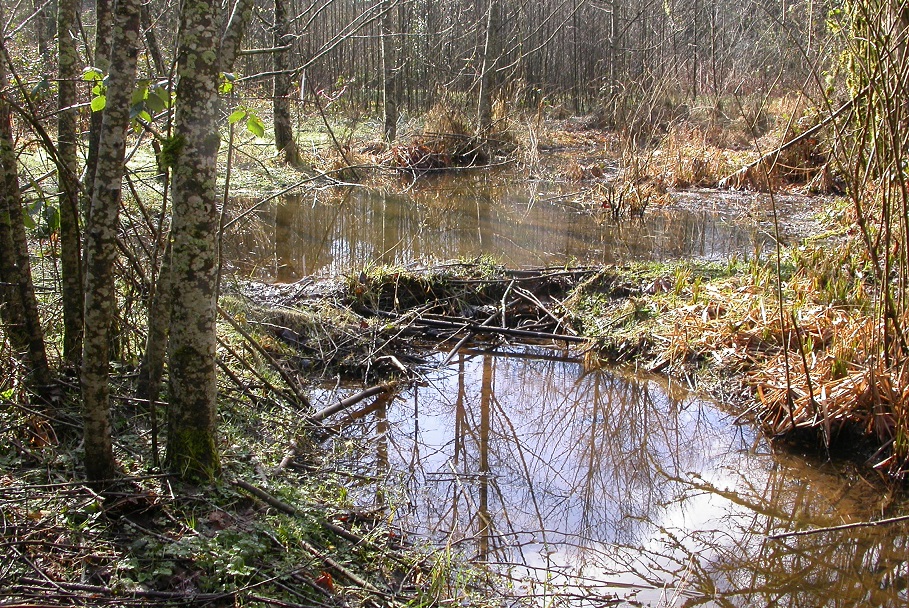Environmental Benefits of Beavers
Beavers help reduce the impacts of climate change - and help salmon
Beavers store water and improve hydrologic (water) conditions. They increase water storage on the surface as ponds are created and increased in size. This water filters down into the water table and recharges groundwater too. In some places this increase in water storage helps keep streams running that might otherwise go dry in the summer.
As our climate changes in the Pacific Northwest, we will have more rain and less snow. Large, sudden high-flow events will be more common in streams. Beaver dams are like speed bumps in the streams and help slow down the water as it moves through a system. Slower water means less erosion and in some cases less flooding from storms. Ponds also absorb some of the water even if they already appear full, so the volume of water also decreases through a beaver system.
A recent study here in western Washington showed water temperatures downstream of beaver ponds were 2.5 degrees Celsius lower than upstream! That's 4.5 degrees Fahrenheit. The beaver ponds recharge groundwater, which resurfaces colder downstream. As air and water temperatures rise from climate change and other human impacts, fish and other wildlife can get too hot, known as thermal stress. These downstream cooling effects from beaver ponds help.
Finally, beaver dams hold more water in stream systems than streams alone can hold. In this way, beaver wetlands become natural fire breaks, because water does not burn. And as wild fires are more likely to occur on both sides of the Cascades, fire control becomes increasingly important.
Additional information on how beavers can help us adapt to climate change, see the poster and associated handout below.
Beavers increase biodiversity and provide salmon habitat
Beaver ponds are habitat for many insect, bird, amphibian, mammal, and fish species, including coho and steelhead salmon. Beavers are ecosystem engineers because they create, modify, and maintain habitat and ecosystems. They consequently have a large impact on the biodiversity of an area. They bring wood into the water, and that wood provides food and shelter for insects. Those insects become food for other species, including salmon. The insides of beaver lodges provide homes for other animals such as muskrats, mink, and even river otters. Some birds nest on top of their lodges. And fish take cover in the woody parts of the lodges that are in the water. Beaver dams slow down water, and the water and wood in the ponds provide different habitat types all in one place. Water temperatures can be different in different areas of the pond. Water velocities can be different too. One pond may have many more habitat "niches" than a flowing stream or pond without beaver activity.
Beaver ponds help improve water quality
Basically, beaver ponds are like water filters: they filter out and store nutrients and pollutants. That means the water flowing downstream from beaver ponds is cleaner than the water that went into it. Beaver ponds also store sediment. If left in place long enough, the sediment will eventually turn the pond into a marshy meadow called a beaver meadow.

 Translate
Translate


